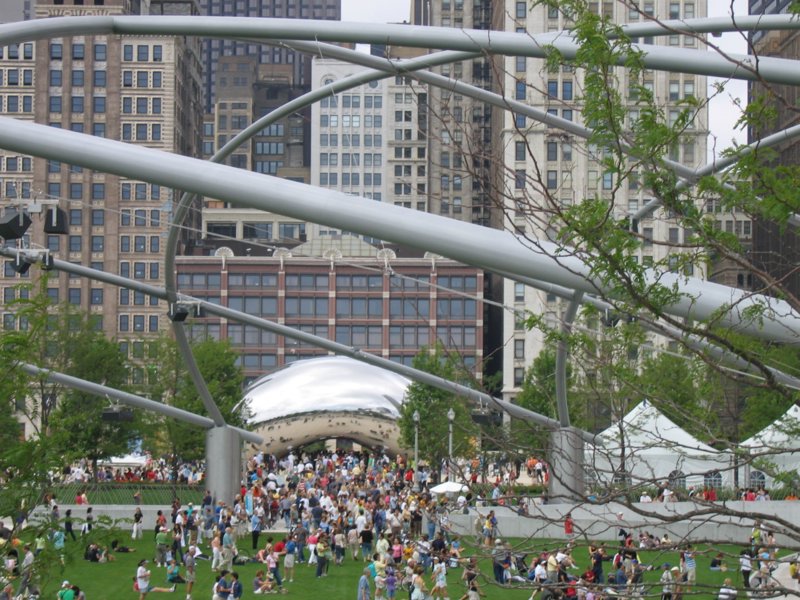
 |
| Chicago's Millennium Park, Photo Courtesy of 80's Forum, Aug 2004 |
Metropolitan Chicago. Mid Day. Nearly six million people make their way about their daily activities, most headed out to lunch in one of the cities’ thousands of restaurants. People crowd the central business district rushing up and down State and Madison, in the busy State Street Shopping District. From higher buildings like Chase Tower, ships can be seen entering Monroe Harbor and Lake Michigan and crowds can be seen gathering in Millennium Park. The CTA Rail system clacks nearby whisking passengers uptown to residential districts and the O’Hare International Airport. People crowd the outdoor food stands buying deep dish pizza, sandwiches, sausages, and hot dogs.
An inconspicuous young man in jeans makes his way through the crowds carrying a new Land's End backpack. With short cropped hair and European features, he could easily be mistaken for a college student in a hurry to get to the nearby University of Illinois. He filters through the crowds scanning the streets for a likely spot. He stops near an outdoor trashcan, and opens the backback. Removing a container that looks like hairspray, he begins spraying the cloud into the air.
Passersby might notice the man, maybe he was cleaning something. In any case they continue about their business without another thought. The active airborne smallpox virus cultures that were contained in the aerosol aren't likely to be noticed by anyone, until citizens and passersby from that section of the city begin showing up at hospitals and doctors offices more than four days later. Even then, medical practitioners might misdiagnose the patients' conditions as serious colds or flu. If the area where the smallpox release occurred is not contained and cleaned, and people are not vaccinted in a timely fashion, thousands could die.
To many Americans, a horrifying situation like this could be a reality. Since 2001, our sense of homeland vulnerability to terrorism has risen considerably. Fanatical extremists have demonstrated that they can be both patient and resourceful and plot their activities to devastating effect. Bioterror can be even more devastating with lasting effects on America's people, food and agricultural supplies. If deployed in urban environments, such as in a large city like Chicago, conceivably millions of people could be adversely affected due to the prolonged delay in treatment. For a more in-depth scenario of the possible response and ramifications of a smallpox attack, see Smallpox: An Attack Scenario, by Tara O'Toole.
Today's urban environments lack the detection, controls and protection mechanisms necessary to counter such threats. Early responders and cleanup crews require specialized equipment to counter biological weapons and prevention of additional contamination is paramount. In some cases, emergency units may only be prepared and have equipment to counter bomb threats, and not for a widespread epidemic outbreak. Infected citizens require hospitalization and immediate treatment with antibacterial and antiviral treatments for contagion.
The Biological Sensor Fusion team evaluated this problem for possible system design solutions incorporating fast-response, multi-tiered, ad-hoc biological contaminant sensors deployed in urban environments. The sensor network design includes rapid contaminant sensing and data distribution to command centers where it can be fused for decision makers to quickly respond to biological threats. Response times could be improved to a matter or hours or less using an urban sensor detection grid, and fuse the data to geolocate the source of any active threats. This is much more productive than waiting for patients to become infected.
The Biological Sensor Fusion project Use Case is a possible biological threat release in metropolitan Chicago, in the downtown area of Police District 001, which is the most heavily populated section of the city.

|
| Photo Courtesy of Picasa Web Albums, 2008 |